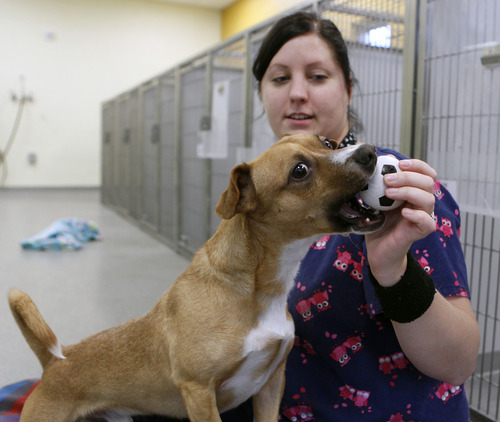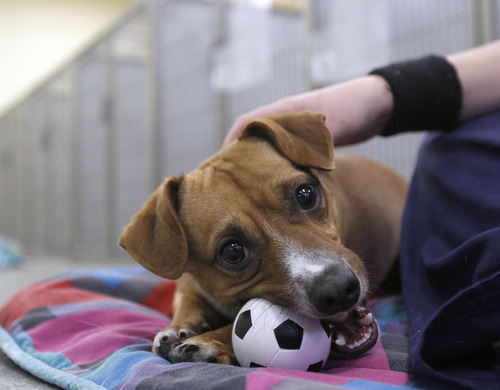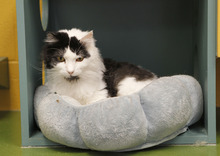This is an archived article that was published on sltrib.com in 2012, and information in the article may be outdated. It is provided only for personal research purposes and may not be reprinted.
West Valley City • Best Friends Animal Society teamed up with the city earlier this year to turn the community's animal shelter into a no-kill facility.
That day could come sooner than expected. Best Friends Executive Director Anna Gonce said Tuesday that a 90 percent save rate would meet that goal — and the current percentage of dogs and cats that leave the West Valley City-Taylorsville shelter alive is 82 percent, up from about 58 percent in 2011.
Gonce told West Valley City Council members at a study meeting that the goal of the shelter and her group had been to achieve an 80 percent save rate by June 2014. The numbers she used compared January to September 2012 to the same period in 2011.
Mayor Mike Winder praised Best Friends and the animal services staff for increasing adoptions and drastically reducing the euthanasia rate.
Taylorsville Mayor Russ Wall, whose city is served by the shelter, also is happy with the progress. In his State of the City address in February, he had called for the shelter to work with volunteer groups to achieve no kill status by 2015.
"I'm totally thrilled that we're able to place those animals rather than kill them," Wall said Wednesday. "I'm so appreciative of the Best Friends organization for coming in and helping make it a great facility."
Under a two-year contract signed in June, Best Friends and the shelter agreed to work together to increase adoptions, provide spay and neuter assistance and implement a trap-neuter-return (TNR) program for stray cats.
Their adoption campaigns have included Seniors for Seniors; $50 pitbulls; Kitty Palooza; $5 felines; and Pick Your Price, all of which led to 298 adoptions. Hours at the shelter, 4522 W. 3500 South, have been expanded to make it easier for animal lovers to adopt a pet and a Best Friends staff member works at the facility one or two days a week to support adoptions.
In addition, hundreds of vouchers for spaying or neutering a pet have been distributed to west-side residents and nearly 100 cats have been sterilized under the TNR effort, reducing the potential number of felines that might end up at the shelter.
The effort has been fueled by volunteers and the "100 percent support" of shelter workers, Gonce said.
No-kill actually means low-kill because just about all shelters put down animals. Organizations have different definitions of the term: Gonce said shelters typically have to euthanize about 10 percent of animals because they are extremely aggressive, sick or badly injured.
Best Friends CEO Gregory Castle said the latest statistics "point to the potential for going the final mile by exceeding a 90 percent save rate for dogs and cats."
He added, "This is the level commonly quoted as being 'no-kill'. Best Friends believes it is a significant milestone along the way, and that ultimately we define no-kill as being when the only animals euthanized are those that are terminally ill or suffering from such a deterioration in their quality of life that it is the kindest thing to do."
The push to reduce the number of euthanized animals began a year ago when a cat named Andrea survived two attempts by shelter workers to gas her. (She was later adopted). The controversy over the use of the gas chamber grew into a discussion of the number of dogs and cats being put down and, in turn,led to the shelter and Best Friends agreeing to work together.
Best Friends is pro viding funding of up to $350,000 for program activities during the two-year contract period and the shelter is paying the organization $45,000 a year. West Valley City is putting up $30,000 a year and Taylorsville, which has a one-third interest in the shelter, is paying the remaining $15,000. Best Friends has spent $30,745 so far, Gonce said.
Twitter: @PamelaMansonSLC











